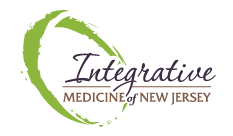Changing Gene Expression Without Changing Genes
One of the most absorbing topics emerging from modern health science is epigenetics, defined as “heritable changes in gene activity that are not caused by changes in the DNA sequence…. The term also refers to … functionally relevant changes to the genome that do not involve a change in the nucleotide sequence. Examples of mechanisms that produce such changes are DNA methylation and histone modification, each of which alters how genes are expressed without altering the underlying DNA sequence.” These are concepts that profoundly shift our understanding of health and disease and of the nature vs. nurture debate—particularly when nutrition enters the picture.
Functional Medicine has acknowledged for decades that our genes are powerfully influenced by environment and lifestyle to produce the unique gene expression profile with which each of us lives. Until recently, however, we did not understand that those same powerful influences could also produce heritable effects. Understanding that each child can be born with particular abilities or vulnerabilities as a result of how his/her parents (and even grandparents) lived is both exciting—because we can do more than ever to avoid illness and create health—and humbling—because the choices we make as individuals can affect not only our own health, but that of future generations.
Even more exciting, “the potential reversibility of epigenetic changes suggests that they could be modulated by nutrition and bioactive food compounds.”
IFM has named 2014 the Year of Nutrition,to underscore the importance of a food-first perspective on health and disease
Four years ago, a Duke University biologist named Randy Jirtle began an elegant little experiment that would ultimately lead him to confront one of life’s biggest mysteries. He started with two groups of mice that gave birth to sets of identical babies carrying the same genes. The babies were raised the same way from birth. They should have looked alike but instead, they barely looked related. In the first group, the babies were overweight, prone to diabetes and cancer and covered in fur the color of rancid butter. The mice in the second group were beautiful: lean, healthy, brown. Same nature, same nurture, radically different outcomes. What was going on in there?
“The difference, it turned out, wasn’t due to the mice’s genetic code, nor was it due to the environment. It lay instead in a mechanism that was mediating between the two. A gene in the sickly yellow babies was making a disease-causing protein called Agouti, which also affects coat color. The brown babies had the same gene, but it wasn’t making much of anything. It had mostly stopped working. The brown babies’ mothers had eaten a special diet during pregnancy: one rich in folic acid, which floods the body with tiny four-atom configurations called methyl groups. These methyl groups had infiltrated the growing brown mouse embryos and latched onto the flawed gene, shutting it down. This was the solution to the mystery: Jirtle had vividly illustrated why, at the biochemical level, the genetic sequence alone doesn’t always equal destiny. Four humble atoms had been enough to override a serious defect in the brown babies’ genomes. And what was true of the mice turned out to be true of men: there is much more to our nature than the plans laid in the genetic code.”
Dr. Jirtle has continued his ground-breaking work in related areas, such as genomic imprinting4 and the effects of low-dose ionizing radiation during gestation. In an interview with ScienceWatch.com,6 he offered the following perspective:
“…we are entering a new era of biological research—one where it is becoming increasingly apparent that humans are indeed the best model for understanding diseases afflicting mankind, as stated so prophetically by the English poet Alexander Pope in the early 18th century. (“The proper study of mankind is man.”—An Essay on Man) This important realization, and the change in the research approach to which it points, will require scientists from numerous disciplines to collaborate in order to bring together the biological samples and patients and exposure information needed to tease out the alterations in our epigenome, which link environmental exposures during susceptible stages of life to disease formation years later. The field of medicine could potentially be revolutionized by this epigenetic perspective of disease formation—subsequently shifting our healthcare emphasis from therapy to prevention.”
In the words of another researcher, “Phenotypic variation is traditionally parsed into components that are directed by genetic and environmental variation. The line between these two components is blurred by inherited epigenetic variation, which is potentially sensitive to environmental inputs. Chromatin and DNA methylation-based mechanisms mediate a semi-independent epigenetic inheritance system at the interface between genetic control and the environment.” Brave new world, indeed!
Many other researchers are now reporting interesting observations and findings from both human and animal models that expand on these core concepts:
“Our early life nutritional environment can influence several aspects of physiology, including our propensity to become obese. There is now evidence to suggest perinatal diet can also independently influence development of our innate immune system … by predisposing the individual to obesity, by altering the gut microbiota, and by inducing epigenetic modifications that alter gene transcription throughout life.”
“Various studies suggest that a number of dietary compounds present in vegetables, spices and other herbal products have epigenetic targets in cancer cells. Dietary phytochemicals have been reported to repair DNA damage by enhancing histone acetylation that helps to restrain cell death, and also alter DNA methylation. These phytochemicals are able to modulate epigenetic modifications and their targets to cure several cancers. Epigenetic aberrations dynamically contribute to cancer pathogenesis. Given the individualized traits of epigenetic biomarkers, the personalized nutrition will help us to prevent various types of cancer.”
“Epidemiological studies suggest that a father’s diet can influence offspring health. A proposed mechanism for paternal transmission of environmental information is via the sperm epigenome. The epigenome includes heritable information such as DNA methylation. We hypothesize that the dietary supply of methyl donors will alter epigenetic reprogramming in sperm. Here we feed male mice either a folate-deficient or folate-sufficient diet throughout life. Paternal folate deficiency is associated with increased birth defects in the offspring, which include craniofacial and musculoskeletal malformations. Genome-wide DNA methylation analysis and the subsequent functional analysis identify differential methylation in sperm of genes implicated in development, chronic diseases such as cancer, diabetes, autism and schizophrenia… This model suggests epigenetic transmission may involve sperm histone H3 methylation or DNA methylation and that adequate paternal dietary folate is essential for offspring health.”
“The ‘Developmental Origins of Health and Disease’ (DOHaD) hypothesis proposes not only that we are what we eat but also that we could be what our parents ate, and is a biologically and evolutionarily fascinating concept. The hypothesis postulates that early-life development is critically sensitive to inadequate nutrition and other environmental factors leading to permanent changes in metabolism that can alter susceptibility to complex diseases. These early-life exposures can thereby be recorded and archived in the ‘cellular memory’ by inducing persistent adaptations in cellular function(s) with long-term effects. Not only is this process of scientific importance, it also has relevance for public health, particularly in the framework of the twenty-first century pandemics of chronic diseases: the implication being that improvements in nutrition of one generation could prevent common complex diseases in future generations.”













